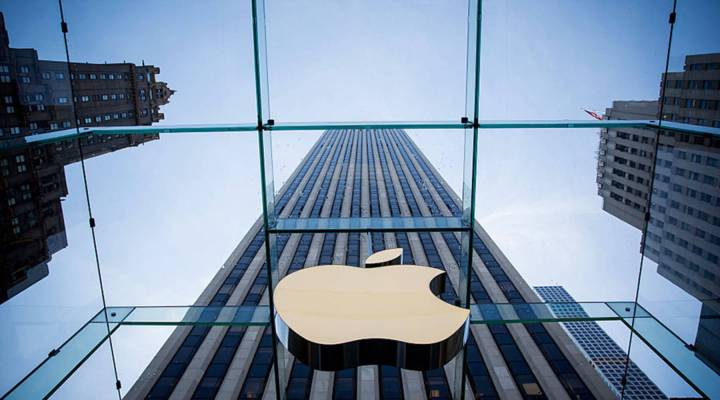
Apple will reportedly replace Intel processors with its own microchips
Apple will reportedly replace Intel processors with its own microchips

Apple might be getting in the chip business. Bloomberg reported earlier this week that Apple plans to replace Intel processors in Mac computers with microchips of its own. The move would stem from Apple’s strategy of making all of its devices — like Macs, iPhones and iPads — work more like each other and more seamlessly. Marketplace Tech host Jon Gordon spoke with Dwight Silverman, the tech editor at the Houston Chronicle, about what’s behind the move. The following is an edited transcript of their conversation.
Dwight Silverman: Well, there are several reasons they would want to do this. Apple is notorious for wanting to control the supply chain — all of the various parts that go into its various products. And of course, they do that to a large extent with the iPhone. Right now they make their own processors; they make various other products inside it. There have been stories that they might even start making their own displays in the iPhone. Apple wants to essentially be beholden to no one. Apple is going more in the direction of the original IBM, which wanted to make everything and be in control of everything. That helps them in terms of controlling costs. But it also means that they are masters of their own destiny in terms of product cycles and how quickly they can innovate.
Jon Gordon: So tell me about why this possible move from Apple matters to people who buy Macs and who buy other Apple devices.
Silverman: Well, one of the things that is likely to happen is that if Apple does indeed switch to its own chips, they won’t necessarily be compatible with Intel’s processors. And so we’ll go through yet another period where Apple is making a platform change, and it always results in some kind of disruption. Apple has done this before. When the Mac first started out, it was using Motorola chips. That was the case also with the early Apple IIs, and then they switched to a chip that they co-designed with Motorola and IBM called the PowerPC chip, and then they switched to Intel. And in each one of those steps there was some kind of a disruption for individuals. One of the interesting things about what they’re doing now is that they have already begun moving to what looks like a common platform between iOS and the Mac OS. So it may not be as jarring a move this time.
Gordon: From Intel’s perspective, how bad is this? I mean, Apple is a pretty big customer.
Silverman: Apple is a big customer, but it only makes up about 5 percent of Intel’s revenue. In terms of a black eye to Intel, it certainly is that. Apple’s essentially saying, “we want to do it our way.” However, once Apple goes to its own processors, they’re going to have to be at least as powerful, if not more powerful, than Intel’s processors for customers, particularly professional-level customers, to want to buy into this.
Gordon: This idea that Apple’s own chips would help Apple devices work more like each other and to work more seamlessly together, can you explain that a little bit?
Silverman: So right now there are two Apple rumors out there that relate to this. One of them involves a project called “Marzipan,” which, again, Apple has not confirmed any of this, but that is to make the iOS platform and the Mac OS platform work together so that if you download an app on your iPhone, that app will also work on the Mac OS and vice versa. One of the things that that could be dependent on is if Apple is in control of the processors. The other project for moving to chips — making their own chips — is called “Project Kalamata,” and that will involve essentially taking their own silicon, just as they have their own silicon in the iPhone, and making it so that they are in control of how it works. Once they do that, moving back and forth between the two operating systems should be fairly seamless, and they probably can actually look the same. Apple has resisted doing touchscreen Macs; this might finally allow them to do that in the way that they would want to do it.
| Is Apple still the one to beat when it comes to smart devices? |
| How Apple and Android took over the smartphone market |
| How Apple’s technology affects the smartphone repair business |
There’s a lot happening in the world. Through it all, Marketplace is here for you.
You rely on Marketplace to break down the world’s events and tell you how it affects you in a fact-based, approachable way. We rely on your financial support to keep making that possible.
Your donation today powers the independent journalism that you rely on. For just $5/month, you can help sustain Marketplace so we can keep reporting on the things that matter to you.











